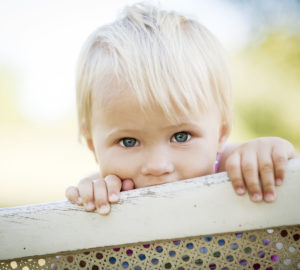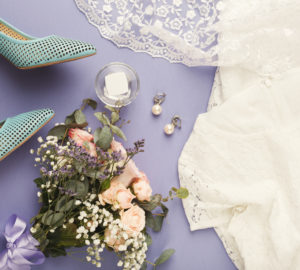There are currently 9 traditions in this directory beginning with the letter B.
Bachelor Party
This was the last chance before his new wife took over the finances for the groom to gather money by gambling for his own future use. Ancient Spartan soldiers were the first to hold stag parties. The groom would feast with his male friends on the night before the wedding. There he would say good-bye to the carefree days of bachelorhood and swear continued allegiance to his comrades.
Bestman
Bestman - Many centuries ago, before the women's rights movement, men who had decided upon a wife often had to forcefully take her with him (or kidnap her) if her family did not approve of him. The groom-to-be would sometimes face resistance from her male family members or from competing suitors who would fight him off. The groom would therefore bring along his "best men" to help him fight for the woman. Today the best man and ushers are honorary positions.
Another legend is that during ancient times when women were in short supply, the groom captured his bride-to-be from a neighboring village. The future bridegroom, accompanied by a male companion, seized any young girl who had strayed from the safety of her parental home. Our custom of a "best man" is a relic of that two-man, strong-armed tactic; for such an important task, only the best man would do.
A best man around AD 200 carried more than a ring. Since there remained the real threat of the bride's family attempting to forcibly gain her return, the best man stayed by the groom's side throughout the marriage ceremony, alert and armed. He also might serve as a sentry outside the newlyweds home. Of course, much of this is German folklore, but it is not without written documentation and physical artifacts. For instance, the threat of recapture by the bride's family was perceived as so genuine that beneath the church altars of many early peoples - including the Huns, the Goths, the Visigoths, and the Vandals - lay an arsenal of clubs, knives, and spears.
Another legend is that during ancient times when women were in short supply, the groom captured his bride-to-be from a neighboring village. The future bridegroom, accompanied by a male companion, seized any young girl who had strayed from the safety of her parental home. Our custom of a "best man" is a relic of that two-man, strong-armed tactic; for such an important task, only the best man would do.
A best man around AD 200 carried more than a ring. Since there remained the real threat of the bride's family attempting to forcibly gain her return, the best man stayed by the groom's side throughout the marriage ceremony, alert and armed. He also might serve as a sentry outside the newlyweds home. Of course, much of this is German folklore, but it is not without written documentation and physical artifacts. For instance, the threat of recapture by the bride's family was perceived as so genuine that beneath the church altars of many early peoples - including the Huns, the Goths, the Visigoths, and the Vandals - lay an arsenal of clubs, knives, and spears.
Bouquet
The bride's bouquet carries many quaint traditions among the different peoples of the world. Orange blossoms, a favorite of many brides, were at one time, when the Saracens carried them, thought to be a symbol of fertility.
The carrying of flowers by the bride has its roots in ancient times when it was believed that strong smelling herbs and spices would ward off and drive away evil spirits, bad luck and ill health. Garlic and chives were also popular for the same reason. During Roman times, this tradition was extended, with the bride and groom wearing floral garlands signifying new life and hope for fertility. The bouquet in particular symbolized a women in bloom.
During Victorian times, flowers took on an additional significance as lovers would send messages to each other using different flowers, with each flower having its own meaning. These associations were soon adopted for the bride's bouquet and are still used today by many brides.
Traditionally, the bride's bouquet is made of white flowers such as orchids, roses, lilies, gardenias, carnations, or stephanotis. Included in the bouquet are fillers like ferns and baby's breath or ivy to give that touch of green.
The carrying of flowers by the bride has its roots in ancient times when it was believed that strong smelling herbs and spices would ward off and drive away evil spirits, bad luck and ill health. Garlic and chives were also popular for the same reason. During Roman times, this tradition was extended, with the bride and groom wearing floral garlands signifying new life and hope for fertility. The bouquet in particular symbolized a women in bloom.
During Victorian times, flowers took on an additional significance as lovers would send messages to each other using different flowers, with each flower having its own meaning. These associations were soon adopted for the bride's bouquet and are still used today by many brides.
Traditionally, the bride's bouquet is made of white flowers such as orchids, roses, lilies, gardenias, carnations, or stephanotis. Included in the bouquet are fillers like ferns and baby's breath or ivy to give that touch of green.
Boutonniere
A very small floral arrangement, usually consisting of one or two blossoms and a few sprigs of greenery, pinned to the left lapel at the buttonhole.
Breaking Of Glas
A Jewish tradition that represents the destruction of the temple in Jerusalem. Many times couple save the pieces of glass from the ceremony in a symbolic box.
Bridal Flowers
Flowers were incorporated into the ceremony because they represent fertility, purity, new life and never ending love. Traditionally, bouquets were a mixture of flowers and herbs. Dill was a very popular choice as an herb because it was believed to promote desire. Following the ceremony, the dill was eaten for that purpose.
Bridal Showers
This event has its roots in Holland. When a bride's father did not approve of the husband-to-be, he would not provide her with the necessary dowry. The brides friends would therefore "shower" her with gifts so she would have her dowry and thus marry the man of her choice. While dowries are long gone today, the practice of giving gifts to the bride-to-be remains.
Bridal showers were also meant to strengthen the friendships between the bride and her friends, give her moral support, and help her prepare for her marriage.
The idea to give gifts is fairly new, dating from the 1890's. At one shower, the bride's friend placed small gifts inside a Japanese parasol, and then opened it over the bride's head so all of the presents would "shower" over her. When word of this hit the fashion pages, people were so charmed, they decided to do the same at their showers.
Bridal showers were also meant to strengthen the friendships between the bride and her friends, give her moral support, and help her prepare for her marriage.
The idea to give gifts is fairly new, dating from the 1890's. At one shower, the bride's friend placed small gifts inside a Japanese parasol, and then opened it over the bride's head so all of the presents would "shower" over her. When word of this hit the fashion pages, people were so charmed, they decided to do the same at their showers.
Bride On Groom's Left
Because the early Anglo Saxon groom so often had to defend his bride from would-be kidnappers, she stood to his left, leaving his sword-arm free. The "best" warrior in the tribe stood by the groom and was responsible for helping defend the bride, thus the placement for the modern day best man.
Bridesmaids
Inviting women to be members of your bridal party dates back to ancient times. One Roman custom was to dress the bridesmaids in a fashion similar to the bride's to confuse evil spirits trying to kidnap the bride. Bridesmaids also had the role of fending off unsuitable suitors, leaving the bride for her groom. Although the specific functions of being a bridesmaid have changed over time, being the brides support system, confident, defender and friend hasn't.
Another legend states that it was once common for the bride, her groom and all their friends to walk together to the church on the morning of the wedding. Afraid that someone, maybe a rejected suitor, would spot the happy couple and put a curse on them. The groom's friends wore clothes almost identical to his, and the women costumed themselves like the bride. These disguises tricked evil wishers into letting the real bride and groom live happily ever after.
Today attendants are dressed alike for the beauty and pageantry of the event.
Another legend states that it was once common for the bride, her groom and all their friends to walk together to the church on the morning of the wedding. Afraid that someone, maybe a rejected suitor, would spot the happy couple and put a curse on them. The groom's friends wore clothes almost identical to his, and the women costumed themselves like the bride. These disguises tricked evil wishers into letting the real bride and groom live happily ever after.
Today attendants are dressed alike for the beauty and pageantry of the event.
previous article
Pick-Up Lines: William Shakespeare
next article







